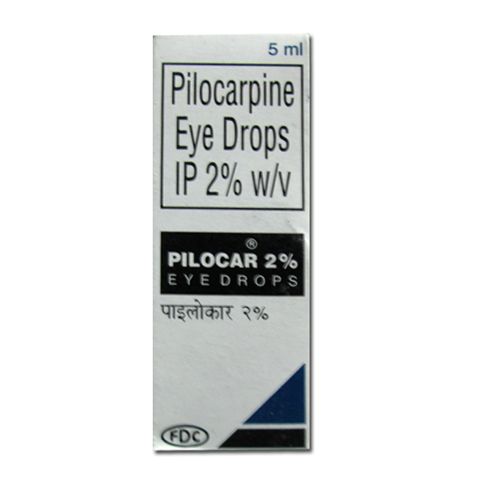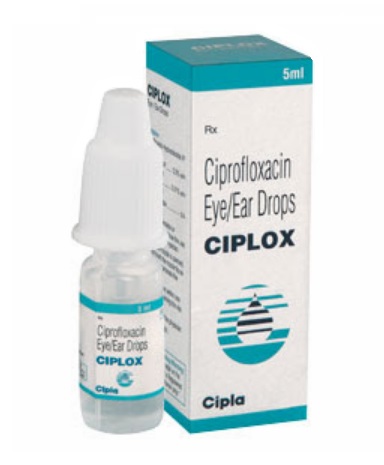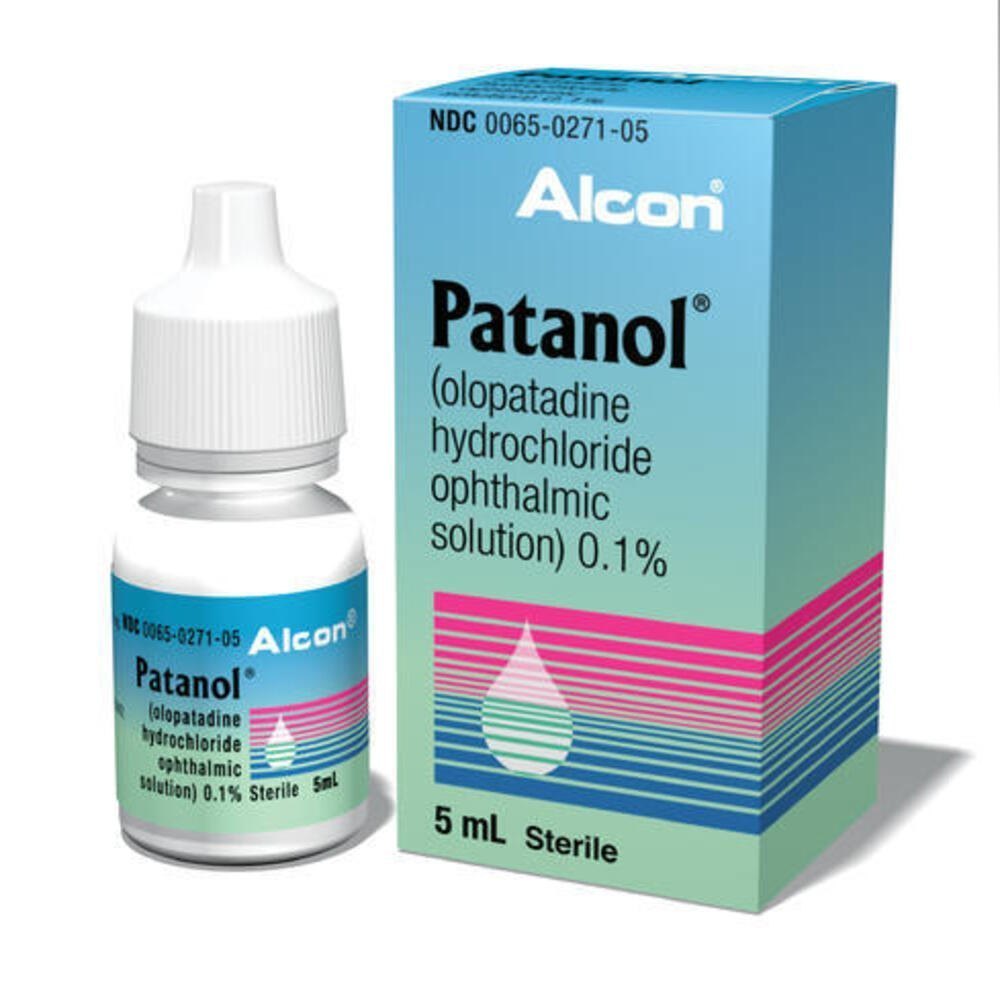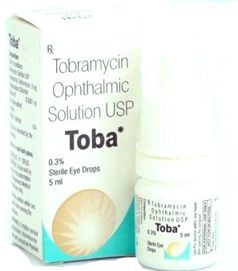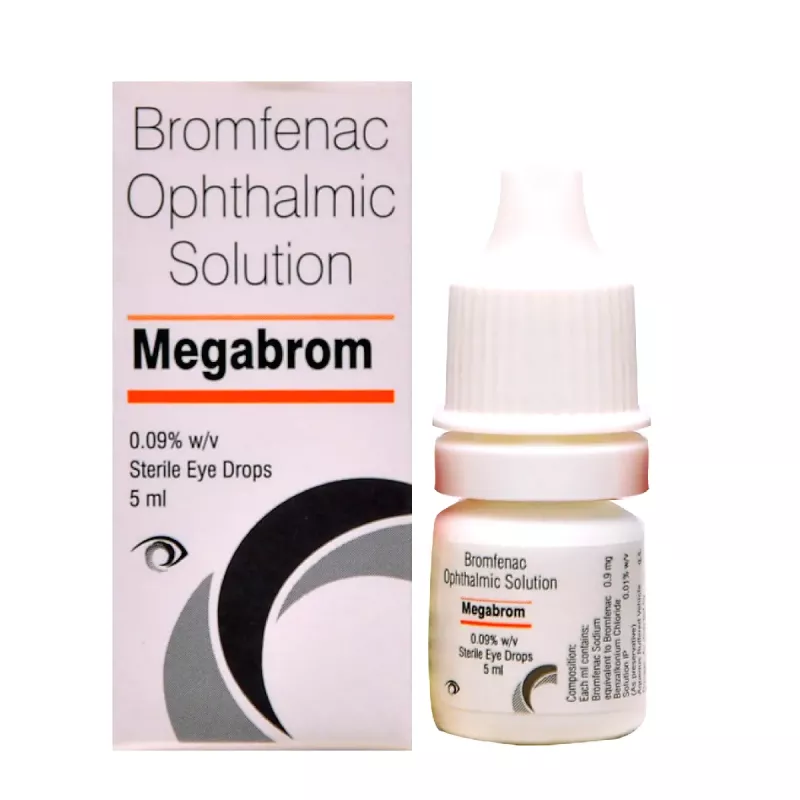Pilocar 2 % E / D
Pilocar 2% drops help treat certain types of glaucoma. This works by decreasing the pupil size. It instigates miosis by helping iris contraction & pupillary sphincter muscles. It decreases the pressure that occurs inside the eyeball by producing aqueous humor. The drug enables reducing the rise in pressure on the eyes.
The doctor will monitor your eyes before and in the course of treatment with pilocarpine, especially if you are suffering from an eye disorder. Do not wear soft contact lenses when you are using this drop. Remove your contact lenses before putting the drops in the eyes.
Do not swallow the medicine as it is suitable for ophthalmic use only. Those using this drop are recommended not to consume alcohol while undergoing the treatment.
Avoid using the drops if you have an eye disorder/condition without a doctor’s suggestion. Let your doctor know before you start using this eye drop while you are breastfeeding or pregnant.
Also, use the medicine with caution if you have heart or lung disease. Also, the medicine should be used with caution for children below 18 years. Consult your doctor before using the medicine on children.
Uses of Pilocar 2%
- Produce miosis after surgery/ophthalmoscopic examination.
- Helps treat certain types of glaucoma
Benefits of Pilocar 2% Eye Drops
Pilocar 2% is a medication containing pilocarpine, a cholinergic agonist used primarily for the treatment of certain eye conditions. This medication offers several benefits for individuals experiencing specific eye issues:
- Reduced Intraocular Pressure: Pilocar 2% eye drops are commonly prescribed for glaucoma and ocular hypertension. They work by stimulating the eye's drainage system, increasing the outflow of fluid from the eye. This helps to lower intraocular pressure, which is a key factor in managing glaucoma and preventing potential optic nerve damage.
- Glaucoma Management: Pilocar 2% plays a vital role in managing open-angle glaucoma, a condition where increased intraocular pressure can lead to gradual vision loss. By reducing the pressure within the eye, the medication helps slow down the progression of the disease and preserve visual function.
- Improved Aqueous Humor Drainage: Pilocarpine, the active ingredient in Pilocar 2%, enhances the drainage of aqueous humor, the fluid that fills the front part of the eye. This can lead to better regulation of eye pressure and a decreased risk of damage to the optic nerve.
- Constriction of the Pupil: Pilocarpine causes the pupil to constrict (get smaller), a process known as miosis. This can be beneficial in certain cases, such as during eye examinations or surgeries, as it provides better visualization of the structures within the eye.
- Preservation of Vision: By effectively controlling intraocular pressure, Pilocar 2% contributes to the preservation of visual acuity and the overall health of the eye. This can help individuals maintain their quality of life and independence by minimizing the impact of vision impairment.
- Enhanced Treatment Options: Pilocar 2% offers an additional treatment option for individuals with glaucoma who may not respond well to other medications or therapies. It can be used as a standalone treatment or in combination with other medications to achieve optimal pressure reduction.
- Minimized Side Effects: Compared to systemic medications that can have broader effects on the body, Pilocar 2% eye drops target the affected area directly. This localized treatment approach can lead to fewer systemic side effects while delivering the desired therapeutic benefits to the eye.
- Customized Treatment Plans: Healthcare providers can tailor the dosage of Pilocar 2% to suit individual patient needs. This personalized approach allows for optimal pressure control while minimizing the risk of adverse effects.
It's important to note that the benefits of Pilocar 2% should be discussed with a qualified healthcare professional. Only a doctor can determine whether this medication is appropriate for your specific eye condition and overall health, and provide guidance on its proper usage and potential risks.
How to Use Pilocar 2% Eye Drops
Using Pilocar 2% eye drops effectively is crucial to ensure the best results and minimize the risk of side effects. Follow these steps for proper application:
Before You Begin:
- Wash your hands thoroughly with soap and water to prevent contamination of the eye drops.
- If you wear contact lenses, remove them before applying the eye drops. Wait at least 15 minutes before reinserting them.
Step-by-Step Instructions:
- Prepare the Eye Drops:
- Check the expiration date on the packaging. Do not use if the medication has expired.
- Make sure the cap is securely closed to prevent contamination.
- Gently shake the bottle if instructed on the label. Some eye drops may require shaking before use.
- Position Yourself:
- Find a comfortable, well-lit space where you can administer the eye drops easily.
- If another person is helping you, have them wash their hands as well.
- Tilt Your Head Back:
- Tilt your head slightly backward, and using your index finger, pull down your lower eyelid gently to create a small pouch.
- Administer the Eye Drops:
- Hold the eye drop bottle between your thumb and fingers, keeping it upright.
- Without touching your eye or eyelashes, position the dropper tip directly over the pouch created by pulling down your lower eyelid.
- Instill the Drops:
- Squeeze the bottle gently to release one drop into the pouch. Be careful not to squeeze too hard, as you only need one drop per eye.
- Close Your Eye:
- Close your eye gently, avoiding any blinking or squeezing. This helps the eye drop to spread evenly over the surface of the eye.
- Press on the Corner of Your Eye:
- With a clean tissue or your fingertip, apply gentle pressure to the inner corner of your closed eye (near your nose). This prevents the medication from draining into your tear duct and reduces systemic absorption.
- Keep Your Eye Closed:
- Keep your eye closed for about 1-2 minutes to allow the eye drop to distribute evenly and effectively.
- Repeat for the Other Eye:
- If directed by your doctor, repeat the process for the other eye using a fresh single-use dropper.
- Wipe Away Excess:
- If any excess liquid is on your skin, gently wipe it away with a clean tissue to prevent irritation.
After You're Done:
- Recap the eye drop bottle tightly.
- Wash your hands again to remove any residual medication.
Additional Tips:
- If you're using other eye drops or medications, wait at least 5-10 minutes between different eye drops to allow each medication to be absorbed properly.
- Follow the dosage and frequency prescribed by your doctor. Do not exceed the recommended dosage.
- If you miss a dose, use it as soon as you remember, but do not double up on doses.
- If you experience any discomfort, eye irritation, or adverse effects, contact your healthcare provider.
Remember, these instructions are meant as a general guideline. Always follow the specific directions provided by your healthcare provider or on the medication's packaging. If you have any questions or concerns about using Pilocar 2% eye drops, consult your doctor or pharmacist for clarification.
Common Side effects of eye drops (PILOCAR 2% DROPS)
- Discomfort/redness in eyes
- Burning, stinging, or itching sensation around your eyes
- Blurred vision
- Conjunctiva of swelling
- Short-sightedness (temporary)
- Retina detachment
- Vision problems in the dark
- Eyebrow/headache
- Skin rash
Rare effects
- Diarrhea
- Nausea/vomiting
- Very low heartbeat
- Low blood pressure
- Shortness of breath
- Excessive tear secretion
- Watering of the eye
- Excessive salivation
Storage
Store the eye drops at 25°C. Make sure you store the medicine at room temperature. Avoid the exposure of medicine to moisture and heat.
Make sure you check the instructions given on the product page to learn about the storage details. You can also ask the pharmacist. Avoid freezing the medicine. Do not give access to medicine to pets and children.
Warnings before using Pilocar 2%
Pilocar 2% Eye Drops: Important Usage Warnings
Description: Pilocar 2% is a medication in the form of eye drops that contain pilocarpine, a cholinergic agonist used to treat certain eye conditions like glaucoma and ocular hypertension. While this medication can be beneficial, there are essential warnings you should be aware of before using Pilocar 2% to ensure your safety and well-being.
Usage Warnings:
- Prescription Only: Pilocar 2% is a prescription medication. Do not use it without consulting a qualified healthcare professional.
- Medical History: Inform your doctor about any medical conditions you have, especially heart conditions, asthma, urinary problems, and any eye surgeries you've had.
- Allergies: If you're allergic to pilocarpine or any other ingredients in the eye drops, let your doctor know to avoid potential allergic reactions.
- Interactions: Discuss all medications you're currently taking, including over-the-counter drugs, supplements, and herbal remedies, as they might interact with Pilocar 2%.
- Contact Lenses: Remove contact lenses before using the eye drops and wait at least 15 minutes before reinserting them.
- Driving and Machinery: Pilocar 2% can cause blurred vision or pupil constriction. Avoid driving or operating heavy machinery if your vision is impaired.
- Children and Elderly: Safety and efficacy in children and elderly individuals may vary. Follow your doctor's recommendations.
- Pregnancy and Breastfeeding: Consult your doctor before using Pilocar 2% if you are pregnant, planning to become pregnant, or breastfeeding.
- Dosage and Usage: Follow your doctor's prescribed dosage and instructions for using the eye drops. Do not exceed the recommended amount.
- Eye Conditions: Pilocar 2% is specifically for certain eye conditions. Do not use it for other eye issues without medical advice.
- Side Effects: Be aware of potential side effects like eye irritation, redness, headache, or changes in vision. If any severe side effects occur, seek medical help immediately.
- Missed Dose: If you miss a dose, use it as soon as you remember. However, if it's close to the next dose, skip the missed dose and continue with your regular schedule.
- Storage: Store Pilocar 2% eye drops as per the instructions provided on the packaging. Do not expose them to extreme temperatures or direct sunlight.
Remember, it's crucial to consult your healthcare provider before starting any new medication, and Pilocar 2% is no exception. Your doctor can provide personalized advice based on your medical history and current health status.
Drug Interactions
Communicate with the doctor without fail if you are on the following medicines
- Anticholinergics
- Antihistamines
- Medicines for Parkinson’s disease
- Mydriatics
- Pethidine
- Medicines used to treat depression
- Orphenadrine
- Phenothiazines
- Other miotic agents
- Medicines for treating high blood pressure
FAQs
Q-Can I consume alcohol with this medicine?
Consuming Alcohol with Pilocar 2% Eye Drops
When using medication, including eye drops like Pilocar 2%, it's important to consider potential interactions with alcohol. While there is generally no direct interaction between alcohol and Pilocar 2% eye drops, it's recommended to exercise caution and follow these guidelines:
Moderation: If you choose to consume alcohol while using Pilocar 2% eye drops, do so in moderation. Excessive alcohol consumption can have various effects on the body, and it's best to avoid overindulgence.
Potential Effects: Alcohol can sometimes lead to temporary dilation of blood vessels, which might indirectly affect the blood flow to the eye. This could potentially impact the effectiveness of the eye drops in managing intraocular pressure. However, the impact is generally minimal and unlikely to be a significant concern for most individuals.
Consult Your Healthcare Provider: If you have any doubts or concerns about combining alcohol with your medication, including Pilocar 2% eye drops, it's advisable to consult your healthcare provider or pharmacist. They can provide personalized advice based on your specific health condition and medication regimen.
Adverse Effects: Some individuals might experience increased sensitivity to alcohol or certain medications while using Pilocar 2% eye drops. If you notice any unusual symptoms or adverse effects after consuming alcohol, contact your healthcare provider.
Overall, while there is no strict contraindication against consuming alcohol while using Pilocar 2% eye drops, it's wise to approach alcohol consumption with moderation and to prioritize your eye health by following your doctor's recommendations and guidelines for medication usage.
Q-What if I overdose PILOCAR 2% DROPS?
Overdosing on Pilocar 2% Eye Drops: What to Know
An overdose of any medication, including Pilocar 2% eye drops, can have serious consequences. If you suspect you have used more than the prescribed amount of Pilocar 2% eye drops, take the following steps:
- Seek Medical Attention: If you believe you have overdosed on Pilocar 2% eye drops, immediately seek medical help. Contact your healthcare provider, go to the nearest emergency room, or call your local poison control center for guidance.
- Do Not Wait: Do not wait for symptoms to worsen before seeking help. Timely medical intervention is essential to prevent potential complications.
- Be Prepared to Provide Information: When seeking medical assistance, be ready to provide information about the medication, the dosage you used, and the time of ingestion.
- Possible Symptoms of Overdose: Overdosing on Pilocar 2% eye drops can lead to symptoms such as excessive tearing, increased salivation, sweating, blurred vision, headache, nausea, vomiting, diarrhea, or changes in heart rate. These symptoms may vary depending on the severity of the overdose.
- Treatment: Treatment for an overdose may involve supportive care to manage symptoms. Your healthcare provider might administer medications to counteract the effects of the overdose or provide other appropriate interventions.
- Prevention is Key: To avoid the risk of overdose, always use Pilocar 2% eye drops as prescribed by your healthcare provider. Follow the recommended dosage and usage instructions carefully.
- Inform Healthcare Providers: After receiving medical treatment for an overdose, inform your healthcare provider about the incident. They can provide guidance on how to proceed with your medication regimen and monitor your health for any potential complications.
Remember, an overdose can be serious and requires immediate medical attention. If you have any concerns about your medication or its usage, it's always best to consult your healthcare provider or pharmacist. They can provide proper guidance to ensure your safety and well-being.
Q-Can I stop applying the eye drops without asking the doctor?
Discontinuing Pilocar 2% Eye Drops: Consult Your Doctor First
It's important to always consult your doctor before making any changes to your medication regimen, including stopping the use of Pilocar 2% eye drops. Here's why:
Medical Supervision: Your doctor prescribed Pilocar 2% eye drops for a specific reason, likely to manage an eye condition such as glaucoma or ocular hypertension. Abruptly stopping the medication without medical guidance could lead to a worsening of your condition.
Potential Rebound Effect: Some medications, including eye drops, can have a rebound effect when stopped suddenly. This means that stopping the medication could cause your symptoms to worsen temporarily before they improve. Only a doctor can guide you on how to safely taper off the medication if it's appropriate.
Risk of Complications: Certain eye conditions require consistent management to prevent complications and maintain your eye health. Stopping the eye drops without your doctor's approval might increase the risk of elevated intraocular pressure, potential vision loss, or other complications.
Doctor's Expertise: Your doctor is familiar with your medical history, the specific eye condition you're dealing with, and your overall health. They can provide personalized guidance on whether it's appropriate to discontinue the eye drops, adjust the dosage, or switch to a different treatment.
Discussing Alternatives: If you're experiencing discomfort, side effects, or concerns about the eye drops, discussing these issues with your doctor is essential. They can recommend alternatives or adjustments to your treatment plan that might be more suitable for your needs.
Steps to Take:
- If you're considering discontinuing Pilocar 2% eye drops, schedule an appointment with your doctor to discuss your concerns.
- During your appointment, express your reasons for wanting to stop the medication and any issues you've encountered.
- Listen to your doctor's advice and recommendations based on your individual circumstances.
- If your doctor approves discontinuation, they will provide instructions on how to safely do so under their supervision.
In summary, always consult your doctor before stopping any medication, including Pilocar 2% eye drops. Your doctor's expertise ensures your health and safety, and they can provide guidance tailored to your specific needs and medical history.
Q-What if I miss a dose of the eye drops?
Missing a Dose of Pilocar 2% Eye Drops: What to Do
If you accidentally miss a dose of Pilocar 2% eye drops, don't panic. Here's what you should do:
- Take the Missed Dose When Remembered: If you remember shortly after missing the dose, administer the eye drop as soon as possible. Try to maintain your regular dosing schedule from that point onward.
- Don't Double Up: If it's close to the time for your next scheduled dose, do not double up on doses. Taking extra medication to compensate for the missed dose can increase the risk of side effects and complications.
- Continue Regular Schedule: Continue using the eye drops according to your prescribed dosing schedule. Missing one dose is not likely to have a significant impact on your overall treatment.
- Notify Your Healthcare Provider: If you frequently miss doses or are unsure about how to handle the situation, consider contacting your healthcare provider. They can provide guidance on how to proceed and may offer suggestions to help you remember your doses.
- Use a Reminder: To help prevent future missed doses, consider setting an alarm, using a medication reminder app, or incorporating the eye drop administration into a daily routine, such as brushing your teeth.
- Follow Your Doctor's Advice: If you miss doses frequently or find it challenging to adhere to your medication schedule, discuss this with your doctor. They can offer strategies to help you stay on track and ensure the effectiveness of your treatment.
Remember, consistency is important when using medication like Pilocar 2% eye drops. However, missing an occasional dose is unlikely to have severe consequences. If you have any concerns or questions about your medication regimen, consult your healthcare provider for guidance.
Conclusion
Pilocar 2% eye drops play a significant role in treating certain types of glaucoma and ocular hypertension by reducing intraocular pressure through pupil constriction and enhancing aqueous humor drainage. The medication's benefits include preserving vision, offering an additional treatment option, and minimizing side effects through localized treatment. Proper usage is essential, involving careful administration, adherence to prescribed dosages, and avoiding alcohol consumption. It's vital to follow medical guidance, avoid abrupt discontinuation, and consult a healthcare professional for any concerns about missed doses, potential interactions, or adjustments in treatment. Prioritizing open communication with a doctor ensures safe and effective management of your eye health.
Your review is submitted successfully. It will be live after approval, and it takes up to 24 hrs.


